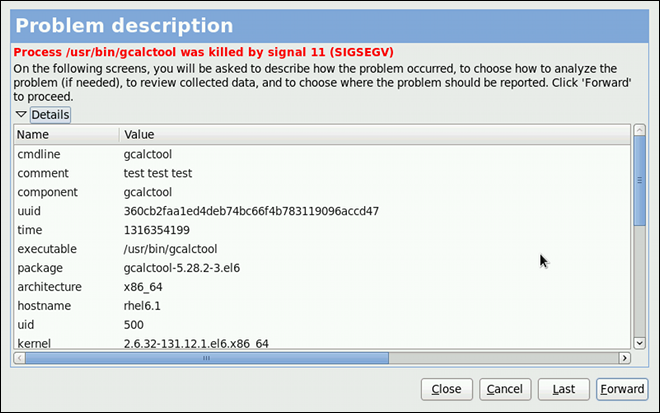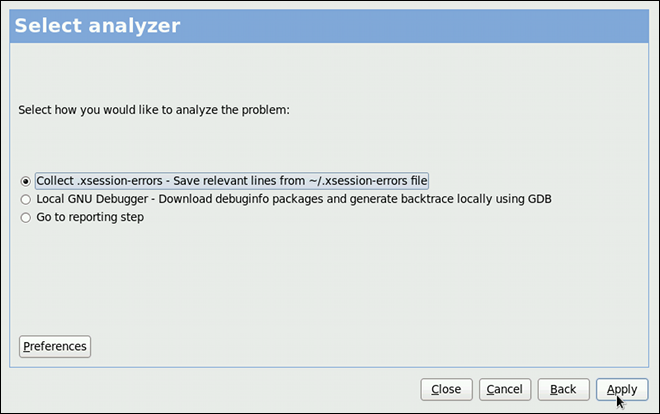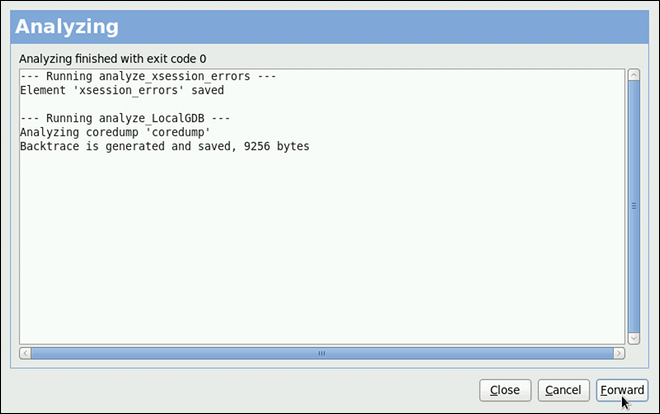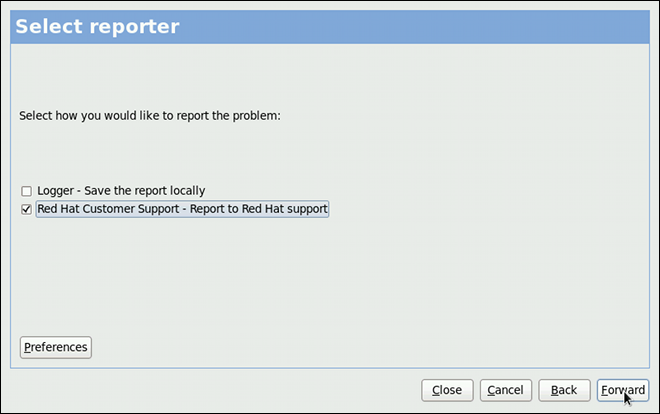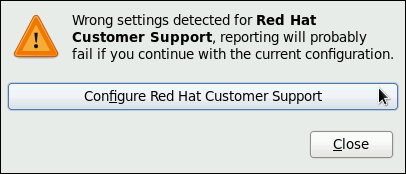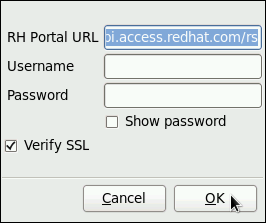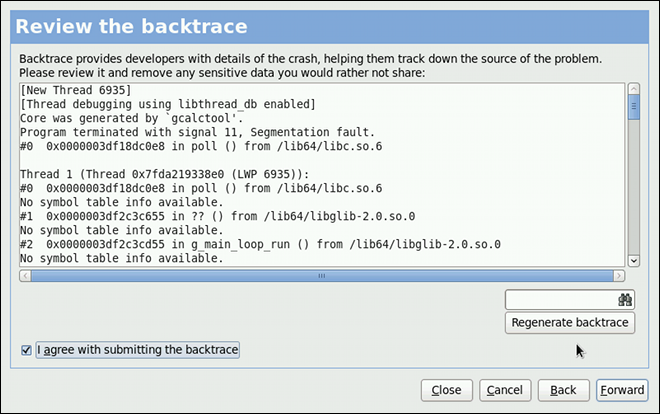此内容没有您所选择的语言版本。
28.2. Using the Graphical User Interface
The ABRT daemon sends a broadcast D-Bus message whenever a problem report is created. If the ABRT notification applet is running, it catches this message and displays an orange alarm icon in the Notification Area. You can open the ABRT GUI application using this icon. As an alternative, you can display the ABRT GUI by selecting the
Alternatively, you can run the ABRT GUI from the command line as follows:
abrt-gui &
~]$ abrt-gui &
The ABRT GUI provides an easy and intuitive way of viewing, reporting and deleting of reported problems. The ABRT window displays a list of detected problems. Each problem entry consists of the name of the failing application, the reason why the application crashed, and the date of the last occurrence of the problem.
Figure 28.2. An example of running ABRT GUI.
If you double-click on a problem report line, you can access the detailed problem description and proceed with the process of determining how the problem should be analyzed, and where it should be reported.
Figure 28.3. A detailed problem data example
You are first asked to provide additional information about the problem which occurred. You should provide detailed information on how the problem happened and what steps should be done in order to reproduce it. In the next steps, choose how the problem will be analyzed and generate a backtrace depending on your configuration. You can skip the analysis and backtrace-generation steps but remember that developers need as much information about the problem as possible. You can always modify the backtrace and remove any sensitive information you do not want to provide before you send the problem data out.
Figure 28.4. Selecting how to analyze the problem
Figure 28.5. ABRT analyzing the problem
Next, choose how you want to report the issue. If you are using Red Hat Enterprise Linux, Red Hat Customer Support is the preferred choice.
Figure 28.6. Selecting a problem reporter
If you choose to report to Red Hat Customer Support, and you have not configured this event yet, you will be warned that this event is not configured properly and you will be offered an option to do so.
Figure 28.7. Warning - missing Red Hat Customer Support configuration
Here, you need to provide your Red Hat login information (See Section 28.4.3, “Event Configuration in ABRT GUI” for more information on how to acquire it and how to set this event.), otherwise you will fail to report the problem.
Figure 28.8. Red Hat Customer Support configuration window
After you have chosen a reporting method and have it set up correctly, review the backtrace and confirm the data to be reported.
Figure 28.9. Reviewing the problem backtrace
Figure 28.10. Confirming the data to report
Finally, the problem data is sent to the chosen destination, and you can now decide whether to continue with reporting the problem using another available method or finish your work on this problem. If you have reported your problem to the Red Hat Customer Support database, a problem case is filed in the database. From now on, you will be informed about the problem resolution progress via email you provided during the process of reporting. You can also oversee the problem case using the URL that is provided to you by ABRT GUI when the problem case is created, or via emails received from Red Hat Support.
Figure 28.11. Problem is being reported to the Red Hat Customer Support database

